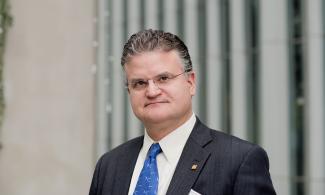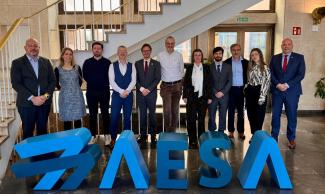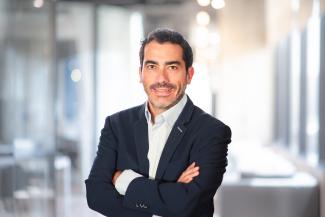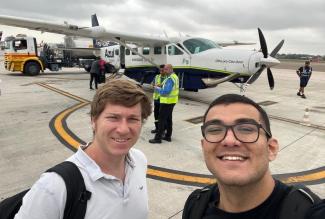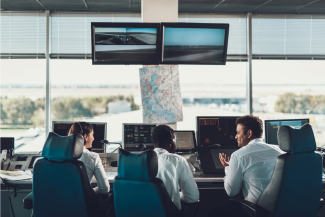Charles Schlumberger is Swiss, 64 years old, holds a degree in Law, an MBA from Harvard University, and a PhD from McGill University on Air Transport Liberalization in Africa. He has been an active pilot since the age of 22, with flight experience in the Americas (Alaska, Nicaragua, United States) and Europe, including transatlantic flights.
But being a pilot today is definitely not the same as it was 20 or 30 years ago. The aviation industry has evolved dramatically with advances in technology, automation, and safety standards. Modern aircraft are equipped with sophisticated glass cockpits, autopilot systems, and GPS navigation, which have transformed the way pilots operate.
We sat down with Charles Schlumberger, Lead Air Transport Specialist at The World Bank, to learn more about his professional beginnings and his remarkable career path, as well as his passion for aviation. In this interview, we delve into the role the World Bank Group plays in the aviation sector, the projects and challenges he is currently involved in, and his views on the challenges and the future of global aviation.

How did you end up working at the World Bank Group (WBG)?
My personal background is in law. I began my career at a logistics company in France, mainly focused on land transport. Later, I worked at UBS as a Swiss banker involved in global credit restructuring, being involved in the merger with Swiss Bank Corporation in 1998. Since then, I have been working at the World Bank Group.
But your interest and passion for aviation started earlier...
In March 1982, I started flying during my law studies. I had some experience as a professional pilot on commercial flights between Basel and Brussels, but I focused more on private flying. I have over 4000 flight hours, and hold European and American commercial licenses. Currently, I own a Cessna 340, but I spent many years flying a Piper Seneca that I used to have in Switzerland.
Why didn't you consider becoming a commercial pilot?
Initially, my goal was to become an airline pilot, but my father suggested I could continue my studies and pursue an MBA at Harvard Business School. As this allowed me to combine my passion for flying with further education, I decided to follow that path.
And you ended up at the World Bank Group managing major aviation projects...
I joined in 1998 during the Asian financial crisis, working on bank restructuring in Asia and Africa. In 2002, the WBG began working on aviation-related projects, and there was no one specialized in Air Transport. Since then, I have been responsible for all aviation projects managed by the WBG in all geographical regions.
What is the World Bank's differentiating factor with respect to other banks?
The World Bank isn't a traditional bank; its goal is reconstruction and development. Aviation isn't its primary focus either. However, it's interesting to note that the first loan ever granted by the WBG in 1947, for the reconstruction of France after the war, already included funds for financing airplanes for the Paris – New York route. By then, it was already known that connectivity greatly aids a country's economic development.
What kind of projects does the World Bank provide more value to?
Today, Public-Private Partnerships (PPPs) are heavily discussed, where the private sector greatly benefits [financially], and the public minimises costs...
On paper, everyone wins, right?
Do you think so? But what about the passengers? The airlines? Not to mention general aviation... They are all forgotten. In the PPPs I know, tariffs always end up rising. Our goal isn't that; it's the economic impact on society to reduce poverty and improve quality of life within a livable planet.
The project you are financing for the expansion of the runway of Isla Rodrigues Airport (in Mauritius) is a good example of this...
We are very selective with the projects we choose to finance, and for me, Isla Rodrigues is a classic example where improved connectivity will have a tremendous impact. The current runway only allows short-haul aircraft operations. All traffic depends on the connectivity from Mauritius. If we achieve intercontinental connectivity, the potential for economic development is substancial... provided that it’s accompanied with other investments, including environmental aspects.
ALG supported the WBG by defining the navigation infrastructure that would be required...
There was some opposition from local authorities in the project to invest in navigation and surveillance technologies, which we at the World Bank knew were indispensable; but we needed an objective analysis, a technical basis to justify and explain to our clients why these investments are necessary. The work was done in a very competent and professional manner, though the study's outcome was already known beforehand.
It's important not to lose the focus on these kinds of large-scale projects...
Sometimes the discussion revolves around having more firefighters at the airport! And we forget about basic systems and equipment to improve operational safety.
How do you see the medium to long-term future of global aviation?
Today, the passion for aviation has waned... my son is a good example... he hasn't shown much interest in learning to fly aircrafts. There are so many stimulus every day, and fewer people are motivated. In 10 or 15 years, there won't be enough pilots to meet the demand, it’s a bit worrying.
Being a pilot nowadays is not the same as it was 20 or 30 years ago, do you think?
When I started flying, there were no electronic screens, not even GPS. It was relatively common to end up landing on another airfield by mistake. Today, everything is automatic, with glass cockpits... Flying with an aircraft like the DC3 is nothing like what flying is today.

